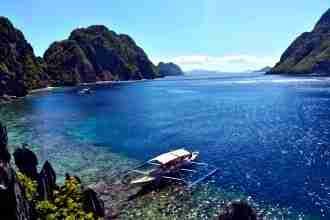After an action packed road trip to Real Quezon on May 1st holiday and watching the much hyped but tad boring bout between Mayweather and Manny Pacquiao, I wanted to take my Sunday easy and that’s why decided to visit Intramuros, the walled city of Metro Manila. As any google search will reveal, the fortified city of Intramuros was built during Spanish colonial times to protect the seat of government. Located along the Manila Bay near the southern bend of the Pasig River, Intramuros’ location was very strategic for trade and for defense. Today, museums and old buildings bring centuries of Filipino history back to life, making Intramuros one of the top cultural and tourist spots .
Before the Spanish discovered and colonised Philippines, Intramuros was the home for the Tagalog and Kapampangan tribes and used primarily for trading with the likes of Borneo, Indonesia, India, and China. In 1565 Philippines was discovered by the explorer Miguel Lopez de Legazpi who sailed from Mexico (then called New Spain) to this country of 7000 islands, establishing the first Spanish colony in Cebu. After a couple of years and a lot of bloodshed, Manila was declared as the Spanish colony’s new capital.
The period between 1500s to the late 1800s saw the Spanish construct many churches, convents as well as schools in the fortified city, making it the center for religion and education in the Philippines at the time. The walls are not uniform as they were constructed during different time periods and also as they followed the contours of the bay. The walls today cover 64 hectares of land,are 8 feet thick with some of the walls reaching up to 22 feet.
In the Second World War, the city was severely damaged. However, the city still brings alive the past quite beautifully. So let me take you into the history books.
Fort Santiago: This former military headquarters of the Spanish colonial government withstood heavy damage during the 1945 Battle of Manila. José Rizal, the national hero of the Philippines, was imprisoned here prior to his execution on 30 Dec 1896.
Minor Basilica of the Immaculate Conception (Manila Cathedral): Destroyed and rebuilt eight times over, the Cathedral is the seat of the Roman Catholic Archdiocese of Manila and one of the most important churches in the Philippines.

Manila Cathedral Arch seen from Intramuros back alleys
San Agustín Church: A UNESCO world heritage site, is the oldest stone church currently standing in the Philippines. The church is a very popular venue for weddings; and I was fortunate enough to catch the wedding ceremony in progress during my visit.
Other Buildings and Streets: Casa Manila, ruins of the Intendencia, Bahay Tsinoy, Baluarte de San Diego,Puerta de Parian, Aduana, Ayuntamiento (Casas Consistoriales), Plazuela de Sta. Isabel, and the Plaza San Luis Complex, ECJ Building, Bayleaf Hotel among many others.

Warehouse building that is still functional
It was a day well spent in living the history.
Verdict
Touristy destination? Yes. But worth going? Definitely yes.
Do keep a look out on many more Filipino Sojourns from me.
Till then Travel See Write.



























